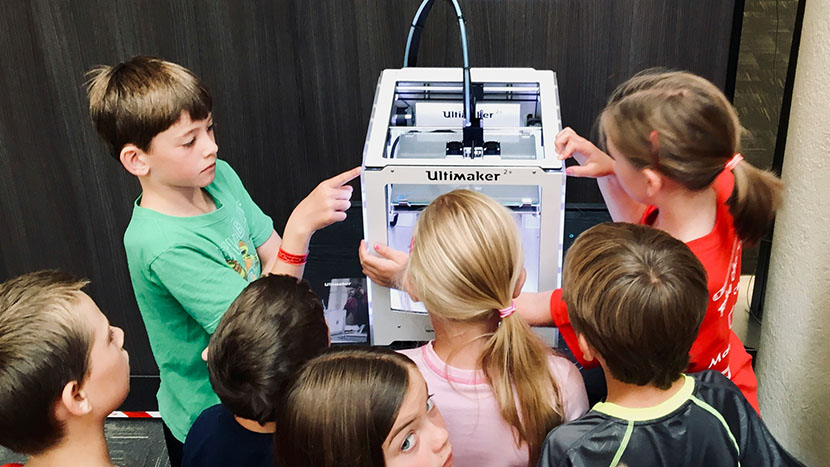3 Innovative Teaching Methods Enhancing Science Education Today
Successfully instilling a passion for science in young minds takes work, and educators who are eager to pass on knowledge to the next generation in an engaging way have an array of tools and techniques at their disposal to achieve this.
From tech-fuelled experiences to hands-on strategies, here’s a look at just some of the innovations shaping science ed at the moment.
Unleashing Curiosity Through Gamification
Transforming the traditional classroom into a vibrant learning arena, gamified education is a trend that’s taking science teaching to new heights. Here are a couple of examples of what this entails:
- Interactive Simulations: Platforms like PhET Interactive Simulations from the University of Colorado Boulder allow students to manipulate variables and see real-time changes in physics, chemistry, and biology experiments. This hands-on approach brings textbook diagrams to life.
- Quest-Based Learning: Transforming a lesson on ecosystems into a quest for survival and adaptation is possible with tools such as Classcraft, which create an immersive environment where students complete challenges linked to their curriculum content – turning the learning process into an engaging game.
These methods make learning more enjoyable and also enhance retention by linking scientific concepts to interactive experiences. The success stories are numerous; educators report higher engagement levels and improved test scores when game elements are integrated into science lessons, with this further enhanced by leveraging competition and rewards to incentivize involvement. Studies have shown that 91% of students exposed to gamification in their studies feel that it enhances the experience of learning, so it’s also a stat that’s supported by hard facts.
In turn there are online study aids which act to cement the information that students have acquired in the classroom, preparing them for formal tests they’ll face further down the line. For instance, with an AP Psychology exam guide, the prospect of revising is streamlined and laced with gamified aspects as well.
Encouraging Experiential Learning in Natural Settings
Moving beyond the four walls of a classroom can radically change the learning dynamic, particularly for science education. Here’s how educators are utilizing the natural world to teach complex scientific principles:
- Outdoor Laboratories: Schools like the Science and Technology Academy in California have incorporated outdoor labs where students conduct real-time soil analysis or study biodiversity first-hand. These sessions not only deepen understanding but also instil a respect for nature and its complexity.
- Field Trips with Purpose: Visits to botanical gardens, national parks, or science centers are curated not just as excursions but as integral parts of the curriculum. For instance, a trip to Yellowstone National Park might include lessons on geothermal activity and ecological conservation efforts within the park’s bounds.
What makes these experiences stick? When students step outside, theory transforms into observable reality. Seeing photosynthesis occur in leaves they’ve just collected or examining rock formations that illustrate geological time scales are experiences which solidify abstract concepts into tangible knowledge. This is relevant because the average amount of info retained in a typical lecture is 5%, while this leaps to 75% in a hands-on learning context.
Tapping Into the Power of Visualization
Augmented Reality (AR) and Virtual Reality (VR) technologies are mixing up the ways in which scientific concepts are taught by immersing students in otherwise inaccessible worlds. Here’s a closer look at how these tools enhance learning:
- Augmented Reality Models: Apps like Elements 4D offer AR experiences where students can interact with virtual models of chemical elements and compounds on their smartphones or tablets. Watching sodium react violently with water in a safe, controlled virtual environment can catalyze both understanding and excitement.
- Virtual Field Trips: VR platforms such as Google Expeditions allow students to embark on virtual field trips across the globe. From exploring the coral reefs in biology to journeying through the human circulatory system in health class, these experiences make learning vivid and memorable. They can even create their own 360 degree videos to use in science projects, further supporting concepts acquired in the classroom.
AR and VR also cater to different learning styles – so visual learners, for instance, benefit significantly from being able to “see” complex structures up close. Moreover, schools that integrate these technologies often observe an upswing in student motivation – who wouldn’t be thrilled by the prospect of a virtual voyage through outer space during physics class?
Wrapping Up
While students still read books and attend lectures to acquire scientific understanding, these innovative teaching methods make dry subjects infinitely more alluring. It’s just up to educators to actually make use of what’s available to them.


































































































